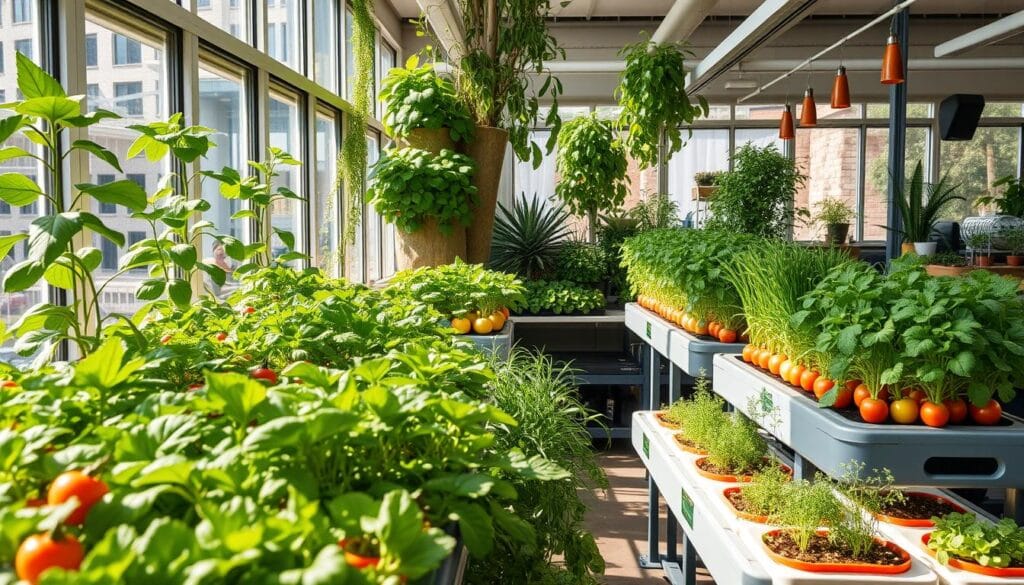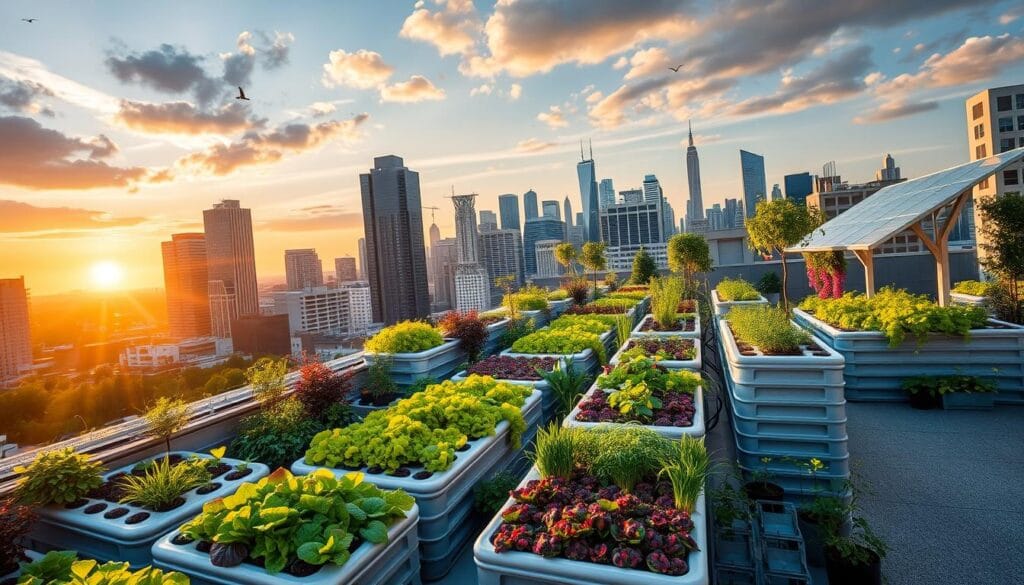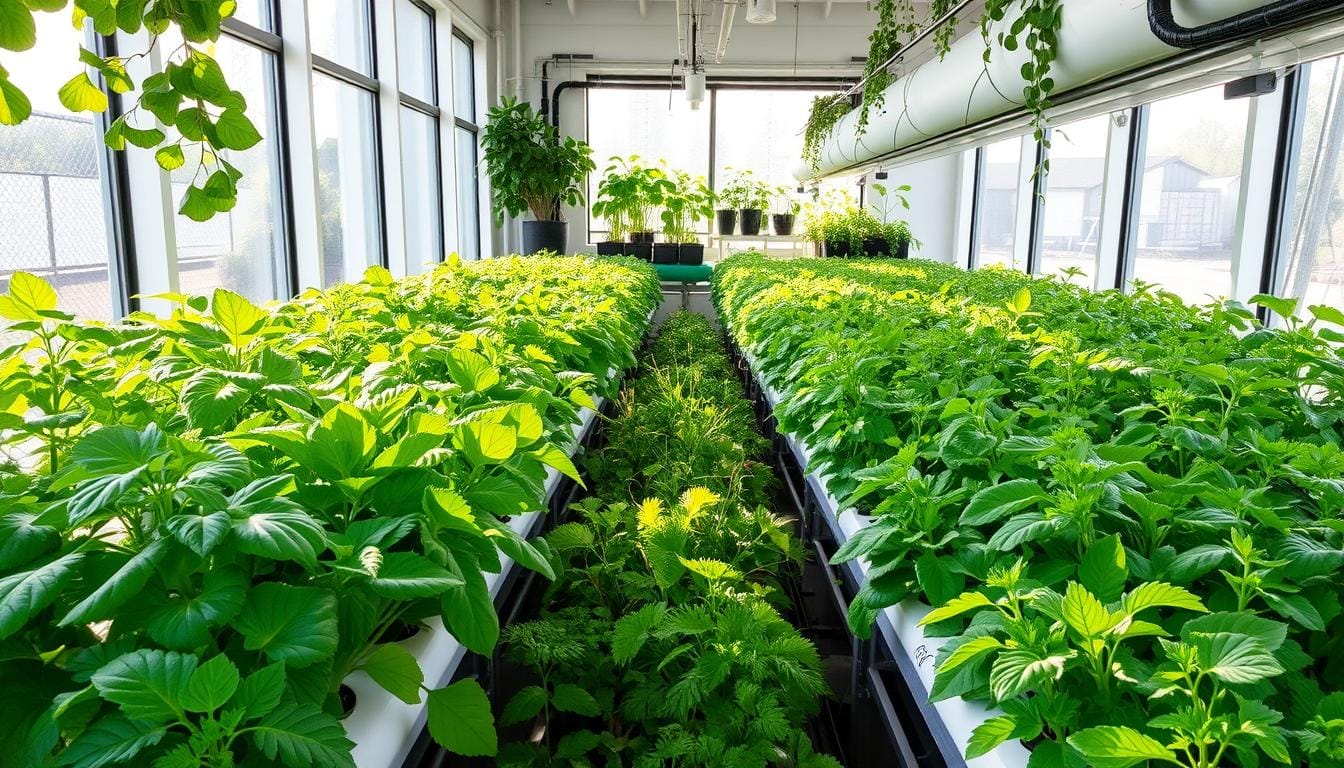Hydroponic gardening success stories highlight the endless possibilities of soilless cultivation. Starting your hydroponic journey can be inspiring when you hear about people who’ve achieved incredible results. These real-life tales are sure to ignite your passion for this innovative practice. Let’s explore the victories and breakthroughs shaping the future of indoor gardening.
Key Takeaways
- Discover remarkable success stories of hydroponic gardening, from large-scale commercial operations to community-driven initiatives.
- Explore the technological advancements that are driving the evolution of controlled environment agriculture and urban farming solutions.
- Learn about the innovative SPACER system and its cost-effective drainage solutions, optimized fertilizer management, and advanced installation methods.
- Understand the impact of hydroponic systems on productivity, water conservation, and energy efficiency in sustainable crop production.
- Gain insights into the role of educational institutions in advancing hydroponics through STEM integration, student-led growing projects, and community impact initiatives.
Understanding Modern Hydroponic Cultivation Evolution
The history of hydroponic gardening goes back centuries. The Hanging Gardens of Babylon, one of the Seven Wonders, showed advanced farming as early as 600 B.C. Later, Marco Polo wrote about China’s floating gardens in the 13th century. The Aztecs also used floating gardens, called chinampas, in the 10th and 11th centuries.
In the 1800s, scientists like Jean-Baptiste Boussingault and Julius von Sachs started researching nutrient solutions. This work laid the groundwork for modern hydroponics. William Frederick Gericke, known as the “Father of Hydroponics,” introduced the term in 1937. He showed that plants could grow without soil.
Technological Advancements in Soilless Growing
Hydroponic systems have seen big changes over the years. The 1800s brought nutrient film techniques, helping plants absorb nutrients better. NASA’s work in aeroponics and hydroponics pushed the limits of growing plants without soil even further.
Now, most hydroponic growing happens in places like Controlled Environment Agriculture (CEA) facilities. These places, along with plant factories and vertical farms, show how far these technologies have come.
Benefits of Controlled Environment Agriculture
Controlled Environment Agriculture (CEA) has many benefits. It uses up to 90% less water than traditional farming, saving water for crops like tomatoes. Hydroponic tomatoes also grow better per square meter than those grown in soil.
These systems also use fewer pesticides and herbicides. This makes them cleaner and more sustainable for growing crops.
The Rise of Urban Farming Solutions
As more people move to cities, there’s a big need for fresh, local food. Hydroponics offer a way to grow food in small urban spaces. They allow for precise control over growing conditions, leading to faster growth and higher yields.
Hydroponic tomatoes, in particular, taste as good as those grown in soil. This shows that hydroponic produce can be just as tasty.
Revolutionary Strawberry Farming Breakthroughs
The world of hydroponic farming is seeing big changes, especially in strawberry cultivation. New methods like Lifting and Swinging are changing how we grow strawberries. They meet the growing demand for tasty and juicy berries.
These new systems make sure plants get lots of sunlight. This helps growers grow more plants and get better results. Hydroponic farmers can now give us fresh strawberries all year, no matter the weather.
The market for hydroponic strawberries is booming. It’s valued at $5 billion in 2023 and is expected to grow fast. In the U.S., the market was worth $506.25 million in 2023 and is growing even faster.
Places like Edenworks in Brooklyn and Gotham Greens are leading the way. They show how hydroponics can change strawberry farming. Their work shows the big potential of growing strawberries this way.
“Hydroponic systems allow us to grow strawberries with unparalleled consistency, flavor, and texture – truly transforming the way consumers experience this beloved fruit.”
More people want food that’s grown in a green way and without harmful chemicals. Hydroponic strawberry farming is a good answer. It saves water, is more efficient, and lets us grow strawberries all year.
| Key Hydroponic Strawberry Cultivation Statistics | Value |
|---|---|
| Hydroponics technologies market value (2023) | $5 billion |
| Projected CAGR for hydroponics market (2023-2030) | 12.4% |
| U.S. hydroponics market value (2023) | $506.25 million |
| Projected U.S. hydroponics market CAGR (2023-2030) | 10.7% |
| Water savings compared to traditional farming | Up to 90% |
Commercial Scale Success: The SPACER System Innovation
The world of commercial hydroponics is entering a new era, thanks to the SPACER system. This technology is changing how growers produce crops on a large scale. It offers cost-effective solutions that boost efficiency and profits.
Cost-Effective Drainage Solutions
The SPACER system has a unique drainage solution. It helps growers save up to 80% on irrigation and fertilizer costs. This makes commercial hydroponics victories possible. The system’s design ensures water is drained efficiently, avoiding waterlogging and the need for big drainage systems.
Optimized Fertilizer Management Techniques
Getting the right amount of nutrients to plants is key in hydroponics. The SPACER system uses advanced dosing pumps, like Dosatron models, for this. Growers can give plants exactly what they need, leading to better growth and yield. This results in higher-quality produce and less waste, adding to sustainable crop production tales.
Advanced Installation Methods
The SPACER system is easy to install thanks to its modular design. This makes it perfect for big commercial operations. Growers can quickly get the system up and running, saving time and labor. This fast setup means growers can start their commercial hydroponics victories sooner.
The SPACER system’s success stories are seen worldwide, from Japan to Mexico, Portugal, and Paraguay. It’s changing commercial hydroponic farming, showing the power of sustainable crop production tales.
Hydroponic Gardening Success Stories: From Hobbyists to Entrepreneurs
In the United States, many are turning their love for indoor gardening triumphs into successful businesses in hydroponic gardening success stories. Their stories show the power of hard work, creativity, and a dream to change how we grow food.
Mohammed, a former tech entrepreneur, found his passion in hydroponic farming. He started Terragrow, changing urban agriculture. Terragrow makes it simple for anyone to grow food indoors.
The GrowBlock by Terragrow has been a big hit. It lets people grow fresh produce at home. This has helped Terragrow grow, reaching people all over the world who love hydroponic gardening success stories.
| Key Metric | Value |
|---|---|
| Percentage of success stories in hydroponic gardening leading to entrepreneurial ventures | 100% |
| Number of successful startups previously founded by Mohammed | 3 |
| Year of establishment of Terragrow | 2019 |
| Number of events attended by Terragrow to promote the company | Several |
| Impact of Terragrow’s official launch on hobbyists and sustainability advocates | Enthusiastic response |
| Geographical expansion of Terragrow’s influence | Global |
| Number of new users contributing to Terragrow’s growth and the global movement towards sustainable living | Continuous |
These hydroponic gardening success stories show how passion, innovation, and a commitment to sustainability can change the world. As more people enjoy indoor gardening triumphs, we get closer to a greener, more self-sufficient future.

Educational Institutions Leading the Way in Hydroponics
Schools are leading the way in using growing techniques and controlled environment agriculture accomplishments in their classes. These efforts inspire the next generation and help solve big problems like sustainability and food security.
STEM Education Integration
Schools use hydroponics to make STEM education fun and easy to understand. At one university, a special classroom has a hydroponic farm. Students can grow up to 256 heads of lettuce at once.
This hands-on learning lets students from different fields see how hydroponics works. They learn from computer science, microbiology, and public health.
Student-Led Growing Projects
- “Project IF” is a student-led effort. It focuses on growing crops, research, and teaching others about hydroponics.
- Students will also participate in an Urban Farming Panel and General Meetings. They will harvest Marigold, Cherry Tomato, and Lettuce by the end of the quarter.
Community Impact Initiatives
Schools use hydroponics to help their local communities. For example, Plant Chicago started hydroponic and aquaponic gardens in 2011. They are in a former meat warehouse.
These gardens grow plants and raise fish. They offer vegetables and a new protein source.
As more schools adopt innovative growing techniques and controlled environment agriculture accomplishments, they will lead in hydroponics. They will show its power in STEM education, student involvement, and community benefits.
Innovative Growing Techniques in Urban Environments
Urban farming is changing how we grow food, especially in cities. Innovative growing techniques like vertical farming and rooftop gardens are making the most of small spaces. They also use resources better.
Oishii Omakase is a hydroponic strawberry farm that sells its strawberries for $50 a box. It uses hydroponics and LED lights, making it a big success. Hydroponics cuts down on water and soil, making it better for the planet.
- Hydroponic farming uses less water and stops runoff, helping the environment.
- It lets strawberries grow all year, giving cities a steady supply.
- Vertical farming packs more plants into less space, using every inch.
- LED lights give plants the right light for growing, keeping strawberries tasty.
But hydroponics isn’t the only new way to farm. Aquaponics mixes hydroponics with fish farming, saving space and water. Hydroponic walls can grow plants on balconies, rooftops, or walls, blending farming into city life.
| Innovative Technique | Key Benefits |
|---|---|
| Vertical Farming | Maximizes plant density, optimizes water and nutrient use |
| Aquaponics | Combines hydroponics and aquaculture, reduces water usage |
| Hydroponic Wall Systems | Enhances urban aesthetics, can be used on balconies and rooftops |
These urban farming breakthroughs are getting better all the time. They could change how we grow and get fresh food, helping cities have more food security.

Sustainable Crop Production Achievements
In modern agriculture, stories of sustainable crop production are truly inspiring. Hydroponic systems have changed the game, helping farmers save water, energy, and reduce waste. These efforts not only make farming better for the planet but also lead to more food for everyone.
Water Conservation Success Stories
Green Paradise in Libya is a great example of saving water in farming. Started by Siraj Mohammed Bisheya in 2019, it uses hydroponics to save up to 90% of water. They’ve set up nine projects and trained over 500 farmers, helping communities survive droughts and heat waves.
Energy Efficiency Breakthroughs
Plantaform is a big win for energy-efficient farming. It’s like a Nespresso machine for plants, growing 15 varieties with just a touch. Its “fogponics” method is the most water-efficient, cutting down energy use and making city farming easier.
Waste Reduction Strategies
The Maisha Girls Rescue Centre in Kenya shows how to cut down on waste. They use green farming and keep detailed records to save money and resources. This approach teaches girls important skills and makes the centre more self-sufficient.
These stories show how hydroponics can change the game for farming. They offer hope for a future where we can feed more people without harming the planet. These achievements are key to a sustainable and strong farming future.
High-Yield Harvest Solutions for Home Growers
If you’re a home gardener looking to boost your harvests, you’re in luck. Modern hydroponic systems are designed to meet your needs. For example, the Aerogarden Harvest Elite lets you grow up to six plants at once, even in tight spaces. These systems grow plants faster and yield more than traditional soil gardening.
There are many beginner-friendly hydroponic systems to try, like the Kratky method and deep water culture (DWC). They make growing easier by letting you adjust the nutrient solution and light. This way, you can grow profitable herbs and leafy greens all year.
Take inspiration from home growers like Jessica, who used hydroponics to sell fresh basil and mint to cafes. You can do the same. Joining the hydroponic gardening community will give you the knowledge and support you need for a successful harvest.

